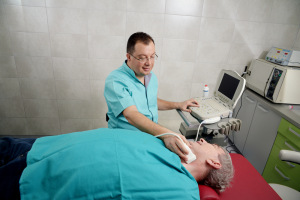Introduction
Usually a psychotic disorder due to medical condition involves hallucinations or delusions that are very prominent.
These are thought to be produced by the underlying medical illness that leads to a physiological change of the brain metabolism to cause these symptoms.
Common such underlying medical conditions are: thyroid disease with too much or too little thyroid hormone production; brain tumor; stroke; infection of central nervous system; epilepsy; liver or kidney disease; systemic lupus erythematosus with central nervous system involvement; severe fluid and electrolyte disturbances; metabolic conditions affecting blood sugar or oxygen content of the blood. There are more, but these illustrate the point. For instance, in temporal lobe epilepsy it is common to have the occasional patient develop religious delusions.
Other hallucinations associated with temporal lobe epilepsy are olfactory hallucinations such as smelling burning rubber or other unpleasant smells. In some patients the medical diagnosis is known and the hallucinations develop subsequently. In other patients the hallucinations are the first clue that there may be an underlying medical condition. If the psychotic condition starts at an age atypical for a psychotic disorder and visual or olfactory hallucinations are present, the clinician must think about a medical condition (or hidden drug abuse) that may cause these symptoms.
Treatment
This is directed at normalizing the underlying medical condition. For instance, when thyrotoxicosis due to a thyroid adenoma has caused a psychosis, and the thyroid producing adenoma is removed surgically, the psychosis disappears as the thyroid hormones normalize.
References:
1. Dr. David Burns: “Feeling good –The new mood therapy”, Avon Books, New York,1992.
2. Diagnostic and Statistical Manual of Mental Disorders, Fourth Edition, (DSM-IV),American Psychiatric Association, Washington,DC,1994.
3. Dr. Shaila Misri at the 46th St. Paul’s Hosp. Cont. Educ. Conference, November 2000, Vancouver/B.C./ Canada.
4. JM Loftis et al. J Neurochem 2000 Nov 75(5): 2040-2050.
5. B. Zilbergeld et al. “Hypnosis – Questions& Answers”, W.W. Norton & Co, New York,1986: 307-312.
6. MH Erickson & EL Rossi:”Hypnotherapy, an exploratory casebook”, Irvington Publishers Inc., New York, 1979: chapter 8, 314-363.
7. G Steketee et al. Compr Psychiatry 2001 Jan 42(1): 76-86.
8. DS Mennin et al. J Anxiety Disord 2000 July-Aug 14(4): 325- 343.
9. J Hartland: “Medical &Dental Hypnosis and its Clinical Applications”, 2nd edition, Bailliere Tindall,London,1982, page: 326-336.







